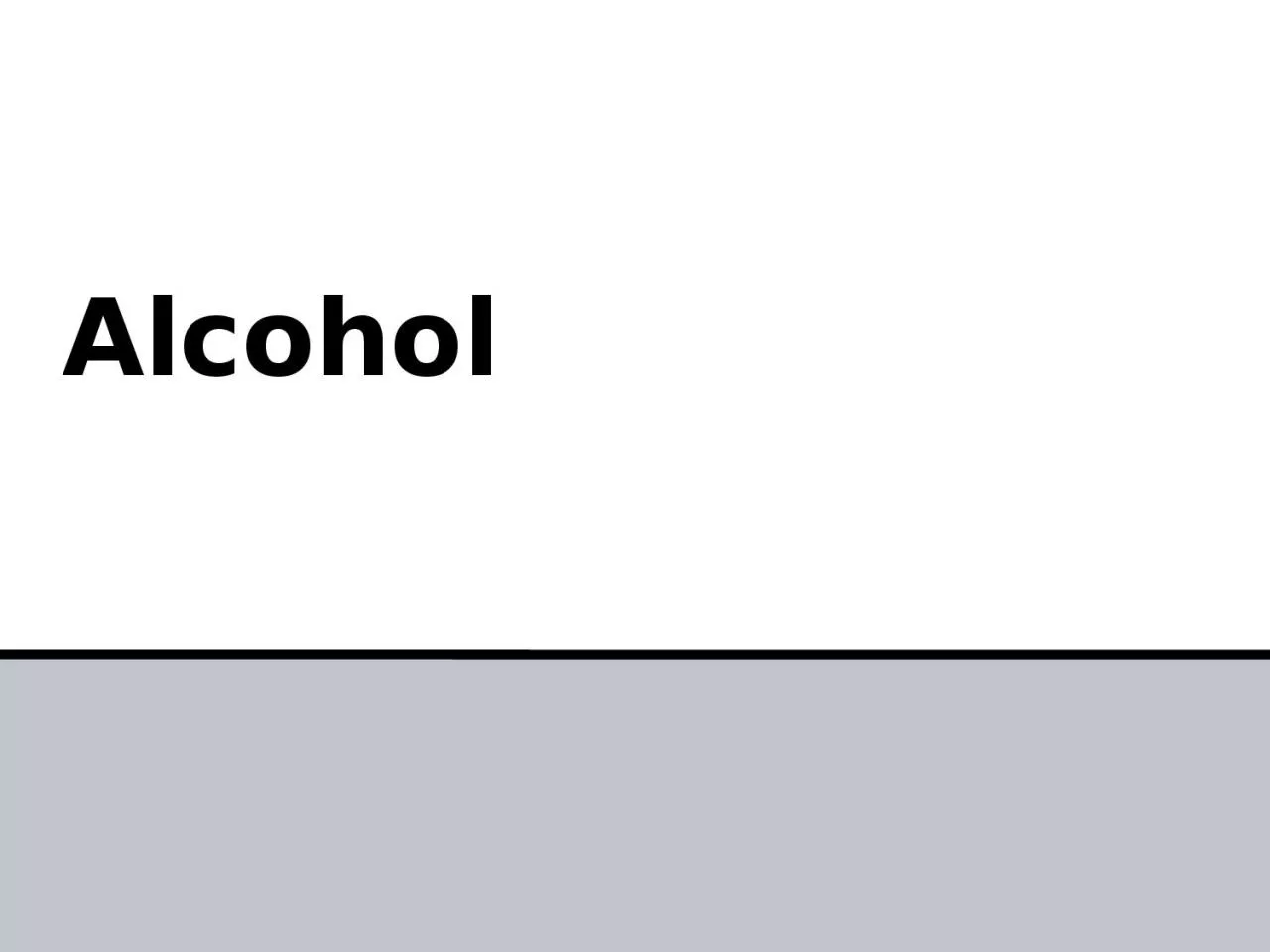

Reasons to DrinkReasons to Abstain The effects that alcohol have on a person are influence by a number of factors The same amount of alcohol has a greater effect on a smaller person than it does on a larger person ID: 1034016
Download Presentation The PPT/PDF document "Alcohol To Drink….. Not to drink….." is the property of its rightful owner. Permission is granted to download and print the materials on this web site for personal, non-commercial use only, and to display it on your personal computer provided you do not modify the materials and that you retain all copyright notices contained in the materials. By downloading content from our website, you accept the terms of this agreement.
1. Alcohol
2. To Drink…..Not to drink…..Reasons to Drink/Reasons to Abstain
3. The effects that alcohol have on a person are influence by a number of factors:
4. The same amount of alcohol has a greater effect on a smaller person than it does on a larger person. Body Size
5. Alcohol moves faster into the bloodstream in females because males carry more water in their bodies. Males 61% of your bodyweight is water.Females 52% of your bodyweight is water.Gender
6. The consumption of several drinks in a short period of time will cause a person to become intoxicated quicker. Time Frame
7. The consumption of several drinks in a very short period of time. Binge Drinking
8. The Path of Alcohol in the body Mouth: alcohol enters the body. Stomach: some alcohol gets into the bloodstream in the stomach, but most goes on to the small intestine. Small Intestine: alcohol enters the bloodstream through the walls of the small intestine. Heart: pumps alcohol throughout the body.Brain: alcohol reaches the brain. Liver: alcohol is oxidized by the liver at a rate of about 0.5 oz per hour.Alcohol is converted into water, carbon dioxide and energy.Pathway of Alcohol Activity
9. A large quantity of alcohol causes the levels in the bloodstream to rise quickly. If it becomes to high, alcohol poisoning can occur. Amount
10. Food slows down(absorbs) the passage of alcohol into the bloodstream. Food
11. Mixing alcohol with prescription or non-prescription drugs will intensify the effects of alcohol. Interactions between the two substances can cause potentially very serious medical consequences. Medicine
12. Blood Alcohol Concentration (BAC): The amount of alcohol present in a person’s bloodstream. Alcohol Terms to Know:
13. A device used to estimate BAC from a breath sample. Breathalyzer:
14. Physically and/or mentally impaired from the consumption of alcohol. For anyone Under 21: BAC above 0 is illegalFor anyone Over 21: .08 is considered intoxicatedIntoxicated
15. DWI: Driving while intoxicated. DWI’s are issued to those who are driving above the legal limit. (.08)BAC levels of .08 or higher are considered evidence of intoxication.BAC levels of .18 or higher are considered Aggravated DWI. BAC levels of .05 to .07 are considered DWAI (Driving While Ability Impaired) and can be classified as caused by alcohol, other drugs, or a combination. New York state also has a Zero Tolerance Law for drivers under the age of 21.DWI
16. DUI’s are issued when a driver is on drugs that impair their ability to operate the vehicle safely. (narcotics, prescriptions drugs, etc). DUI: Driving under the influence.
17. Fetal alcohol syndrome (FAS) is a condition that results from alcohol exposure during pregnancy. Problems that may be caused by fetal alcohol syndrome include physical deformities, mental retardation, learning disorders, vision difficulties and behavioral problems. Fetal Alcohol Syndrome
18. Slurs speechImpairs reflexes and reaction timeImpairs judgementIncreases frequency of urinationCauses nausea and vomitingMay cause anger, violence, or mood swingsRelaxes the eye muscles, making it difficult to focusShort Term Effects of Alcohol
19. Causes liver damageCauses heart diseaseCauses irreversible brain and nerve damageCauses cancer of the stomachCauses malnutritionCauses diseases of the stomach, digestive system, and pancreasResults in a vitamin deficiencyLong Term Effects of Alcohol